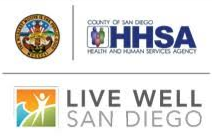The idea is devastating, but it is not uncommon for an alcoholic in recovery to slip up and drink again. This situation is serious not only because it jeopardizes sobriety but also because being exposed to alcohol after a period of abstinence can have significant effects on the human system.
Reasons An Alcoholic Might Start Drinking Again
There are many reasons a person in recovery may decide to drink again. The drinker may have been in recovery for a while and became too comfortable. They debate if they can drink casually after spending time away from alcohol. Casual drinking is impossible for someone who has an alcohol use disorder (AUD) because alcoholism reactivates cravings and makes it difficult to avoid old drinking habits. For people in recovery, it is impossible to reintroduce alcohol into their new lifestyle, as they could only achieve stability once they stopped drinking.
The recovering person may talk themselves into drinking again by creating a strategy for achieving moderation. Or they may have simply acted out of urgency when triggered by stress. A person in recovery with an AUD may justify drinking by avoiding hard liquor and only drinking beer or wine, but unfortunately, the disease does not differentiate, and it’s a slippery slope. To justify drinking, people in recovery might pledge not to drink before a certain time of the day or on specific days of the week. They may vow never to drink alone. While it shows the individual with an AUD is setting boundaries, there is no way for an alcoholic to drink alcohol again in a healthy way. Most individuals with AUDs are proud of their recovery, but it’s dangerous when the pride inflates their ego, and they believe they can handle alcohol. In most cases, these individuals feel that they have found a solution to their drinking problem that does not involve complete abstinence.
What Happens When a Recovering Alcoholic Starts Drinking Again
Whatever the reason, there are serious consequences when someone with AUD drinks. The justifications and excuses are harmful and will soon lead the individual to drink in the manner with which he or she is most familiar. The individual will eventually, and in most cases quickly, find themselves back where they started before making the noble decision to get sober and clean up the consequences of their actions. In many cases, the individual may even find himself or herself at a deeper level of addiction after relapsing. Of course, it varies from drinker to drinker, and no expression of the disease is the same.
Sadly, people with AUD can’t functionally drink and have a healthy relationship with alcohol without going overboard. At certain stages of recovery, individuals who have an AUD may still hope that they can one day drink normally. This hope may disrupt optimal recovery and keep the individual from moving forward in their recovery. If someone in recovery is still behaving the same way that they did when they drank, they are not considered fully emotionally sober and may be labeled as a “dry drunk.” With their recovery journey not fully complete, it’s difficult to remain sober.
How Drinking Affects the Body of a Recovering Alcoholic
When a person with an AUD resumes drinking, it is usually the alcohol that gains all of the power. It sounds impossible for an inanimate object to have power over someone’s life, but that is how the disease of alcoholism works; the body begins to physically and psychologically crave the drug. When someone with an AUD starts drinking, they lose the ability to fight off addiction and are driven by maintaining a buzz or ensuring they will be able to drink. These individuals are sucked back into the vicious cycle of losing control of their actions and desires. This cycle is accompanied by feelings of shame and guilt, leading them to drink more and increasing the severity of their alcoholism.
After not drinking for a while, the body can’t process alcohol the same way, and the drinker’s tolerance lowers. This means that the tolerance the drinker used to have is much lower from not drinking. The additional issue with this decreased tolerance is that the drinker usually returns to drinking the same amount he or she used to before needing to stop. Alcohol floods the drinker’s system and is not tolerated the same way it used to be, intensifying the effects. This results in the individual getting drunker faster. If the recently sober individual drinks the way that they used to, then they may blackout or encounter other dangers. This difference in tolerance is one of the highest risk factors for those who drink after being sober.
Alcohol is not good for the body, but it can have a severe impact when an individual with AUD starts drinking again. When alcohol enters the body, the brain, heart, liver, and pancreas can all be affected. Alcohol “interferes with the brain’s communication pathways, and can affect the way the brain looks and works. These disruptions can change mood and behavior, and make it harder to think clearly and move with coordination.” This explains why an individual that has been sober for a while may begin to act abnormally or exhibit strange behavior.
The heart can also be severely affected by drinking and over time could develop issues like cardiomyopathy, irregular heartbeat, stroke, and high blood pressure. There is also a high risk of damaging the liver, as “heavy drinking takes a toll on the liver, and can lead to a variety of problems and liver inflammation including steatosis (fatty liver), alcohol hepatitis, fibrosis, or cirrhosis.” Besides harming the liver, alcohol causes the pancreas “to produce toxic substances that can eventually lead to pancreatitis, a dangerous inflammation and swelling of the blood vessels in the pancreas that prevent proper digestion.”
Benefits of Sobriety
There are benefits when you stop drinking. When people drink after a period of abstinence, the body experiences shock. Tolerance to the toxic effects of alcohol on the human system is lowered. If you are sober for up to 30 days, the liver will shed excess fat. After six months of abstinence, the process of fat loss on the liver may be completed, resulting in a healthy liver. Other data suggests that “if you have fatty liver disease, the damage may be reversed if you abstain from alcohol for at least 2 weeks.” This data demonstrates the negative effects alcohol has on the body, deteriorating drinkers’ overall health. Whether it is single use or a boozy bender, there is the risk of alcohol interfering with the body’s normal functioning.
While it is heartbreaking when those in recovery relapse, it is never too late to start over and get help. It is essential to acknowledge that when someone with an AUD starts drinking again, it is only prolonging the health issues, unhappiness, and instability that alcoholism causes for the drinkers and their loved ones. Having an understanding that drinking again only prolongs and worsens issues can help prevent the relapse. Recovery involves coming to terms with the reality of the situation and understanding that a lifestyle of abstinence is the only possible lifestyle for those recovering from Alcohol Use Disorder.
At Genesis Recovery, we are here to answer all your questions regarding alcohol use disorder, the process of recovery, and the slip-ups that come along with it.

